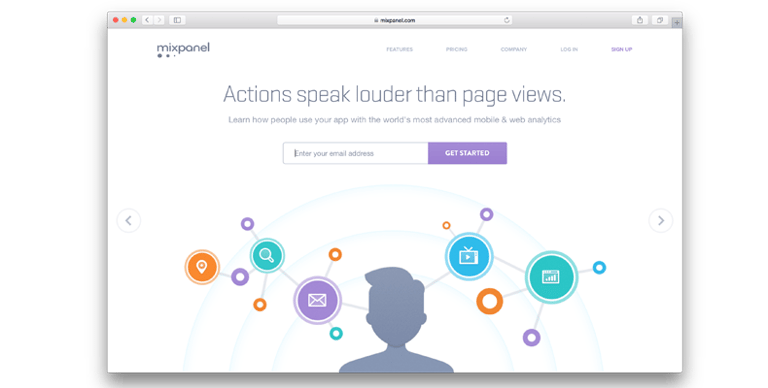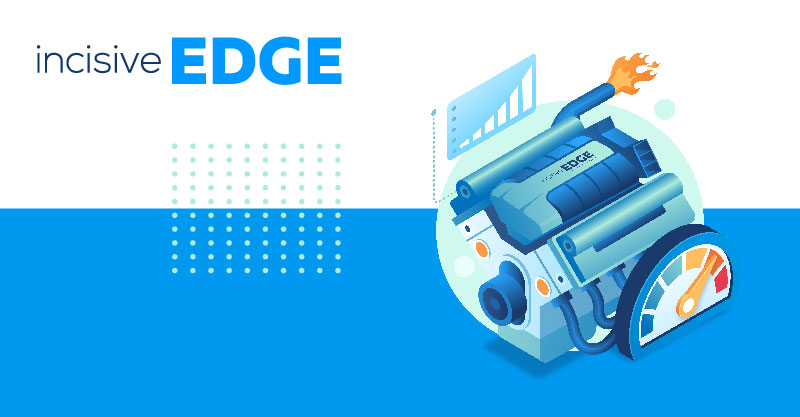According to market research behemoth, International Data Corporation (IDC), the market for marketing automation agencies will grow this year to $4.8 billion, up from the $3.2 billion it was valued at in 2010.
But why such a huge leap in marketing automation spend? If you’re reading this, you probably know the answer already. It’s because inbound marketing automation works likes magic.
Right now, it’s giving businesses huge returns on marketing investment, not to mention the fact that it removes many tedious, repetitive tasks from the to-do lists of you and your team.
It can seem like there is a lot to learn. And how can you get those juicy returns from your automation efforts as if you were an experienced marketing automation agency?
Well, that takes time and practice. But you can certainly learn a thing or two from an experienced team.
Here’s an introduction to marketing automation, plus some best practices that are as accessible as they are useful.
Check out the following articles to learn more about marketing automation:
- 5 Steps To Successful Marketing Automation For Startups
- What are the key benefits of Marketing Automation?
- 6 Powerful Lead Generation Strategies for B2B Companies
How to use this guide
Modern inbound marketing can be overwhelming to the uninitiated. It involves the use of marketing automation software and a marketing automation platform, which streamline and optimize marketing processes. Developing an effective marketing automation strategy is crucial for success in this rapidly evolving landscape. There's a lot to consider, new user interfaces to learn, and new strategies and marketing concepts to master.
Depending on your understanding of how to automate marketing, some of these tips will seem more advanced than others.
If you’re at the beginning of your inbound journey, bookmark this page, set a recurring reminder and come back to it once every couple of days, once a week or whatever suits you. That way, you can tackle one strategy at a time, only moving on once you’ve mastered it.
The important thing is that you don’t get overwhelmed and take on too much at once. Get to grips with the basics first.
1. A fresh & organised lead database
First up comes your database. For your marketing material to be automated efficiently, the leads you’re marketing to must be organised and regularly topped up.
In an effect known as “database decay”, the quality and “temperature” of your leads tend to decline. If you’re not sure how this works, check out this database decay simulator created by HubSpot.
Punch in the numbers to get a feel for how your database will be affected over time. Once you know this, you can ensure you keep your database topped up, fresh and organised.
You won’t achieve marketing automation agency-level results without committing to maintaining a healthy database.
2. Create your buyer personas
A key benefit of inbound marketing automation is that it lets you tailor your marketing material like never before. With the use of marketing automation platforms and a robust marketing automation solution, you can personalize and optimize your marketing efforts. Gone are the days of one-approach-for-all, hoping for the best and often seeing lackluster conversion rates.
That said, you must create your buyer personas first. Human beings are wildly varied creatures. So we need to do some grouping.
Sit down with your team and create a list of three individual buyer personas. Maybe you attract a group of very cut-and-dry, no-nonsense, system-orientated, mathematics-loving people. On the other hand, maybe some of your audience are slightly quirkier and more creatively-inclined.
Yes, we’re generalising, but you’ve have to start somewhere and then build on this.
For example, as an inbound agency business, we might find both of these personality types - data-analyst marketers and people from the creative teams.
Broadly speaking, different styles of language and different content types will convert better with each group. You can try segmenting your audience based on the industry they’re in, their position in a company and/or other behavioural factors you can learn about them.
If you think this sounds tough, don’t worry; it’s not because you’re doing it wrong. This is a major challenge for all marketers, even the experienced ones.
3. Understand the buying cycle
It's time to delve into the advantages offered by the benefits of marketing automation within the customer journey, which is often referred to as the "life cycle." Marketing teams can achieve a highly detailed understanding of the different stages of the funnel, breaking down the customer journey into smaller and more manageable components. This level of granularity is invaluable for optimizing and fine-tuning marketing campaigns to improve overall effectiveness.
It’s a good tip though to keep things simple. Especially in the beginning.
For example, software as a service (SaaS) product optimisation guru David Skok, breaks down the buyer cycle into three stages. And, as you can see from his article, it’s not because he’s afraid to get into the nitty-gritty. Here are his stages:
- Awareness
- Consideration
- Purchase
Once you’ve tested these three stages, generated a little data, become comfortable with automation and found some success, only then should you consider breaking things down further.
For example, a buyer cycle with more detailed stages might look something like the following:
- Awareness
- Consideration
- Intent
- Purchase
- Repurchase
The buyer cycle stages will also depend a little on your business. Odd numbers may feel neater, but you might find that four stages work best for you. The important thing is that you define them.
You may be familiar with the idea of segmentation, whereby leads are segmented based on various categories. And a great way to segment is to combine your buyer personas with the stages of the buying cycle.
4. Map out your lead flow
Research has shown that there’s a significant difference in conversion rates between companies who map out their lead flow and those who don’t. Do not overlook this step.
What this means is, you must know how your leads travel through your website. You need to know which web pages, email campaigns and social media tactics often result in nudging people through your marketing funnels.
You’ll need data analytics tools for this job and ideally, someone who’s comfortable staring at a screen full of numbers to discover valuable insights. If you’re up for the task or have someone who is, three of our favourite tools are listed below.
Google Analytics
The main benefit of Google Analytics is that it’s incredibly detailed. The downside is that it has so many features and gets updated so regularly, that it’s very difficult to fully comprehend.

Piwik
This tool is much simpler than Google Analytics. It’s arguably less full-featured, but has what it needs to do the job and you can try it out for free before going shelling out for the pro version.

MixPanel
This is an excellent tool that also has an event-driven email feature that’s great at nudging people further down the funnel. It’s created for SaaS products, but even if you’re not working in this sector, it’s worth checking out.

5. Target your content as if to a friend
Once you’ve focused on the above, you can create your inbound marketing automation material; personalised, targeted content that speaks directly to the individual in a way that drives conversions.
Before you do this, imagine that you’re not aiming to convert leads. Instead, imagine that you’re guiding a friend through the appropriate stages of the funnel. Speak to your leads like you were having an informal conversation with someone you know.
Naturally, some companies will have a more formal or corporate style of writing than others. So take that into consideration, too.
Also, returning to our point on buyer personas, remember to speak to them on their own terms. If you feel you’ve got a very detail-focused personality group, provide them with content that reflects those interests.
By creating emails, social media posts, blog posts and other content designed for the right people at the right stages of the buyer cycle, you’ll start seeing a significant jump in your conversions.
Another marketing automation pro tip used by inbound agencies is to ensure you organise your content religiously, with everything clearly labelled in individual folders on a platform like Google Drive, Box or Dropbox.
The last thing you want is to get confused about what materials are for which persona and start sending them out to the wrong people. It’s frighteningly easy to get mixed up if you don’t stay organised.
6. Experiment with email automation
Automation software such as HubSpot is incredibly in-depth, making it very powerful, but a dense subject to learn. If you want to experiment by automating your emails with something more accessible, consider using tools such as Mailchimp.
It allows for segmentation, shows you data on your email open rates and you can A/B test different subject headlines with different segments.
Generating interest with an email campaign set to auto-send every day or week is a powerful tool. Another pro tip understood by marketers is the concept of your “email reputation”.
This means that each email sent has the ability to build or damage your reputation, affecting your automation experiments and each subsequent email open rate. Never underestimate this, and craft your content carefully.
Leads can then be encouraged towards your landing pages to capture emails, make sales and achieve other commercial objectives around the clock. We’ll return to landing pages again in just a minute.
7. Experimenting with social media automation
There are several tools on the market these days that let you automate social media marketing. Many are very accessible and can be pretty effective if you’re prepared to stick with them.
One example is Buffer. It lets you create and queue up social media posts ahead of time, giving basic analytics on click-through rates and retweets so you can see which are the most successful.
By formulating a strategy ahead of time and checking in on your analytics results every week, you can figure out what kind of content and what kind of language is most effective at speaking to an audience.
The downside of Buffer and similar tools is that they’re pretty limited when compared with a fully-fledged automation tool. It’s tough to track leads effectively and direct them through your funnel. Although some automation agencies use it, many consider it too basic for a fully integrated inbound marketing campaign.
But, if you’re looking for something to try out marketing automation to get a feel for what’s possible, it’s a good start.
8. Set up landing pages with A/B tests
You may have done A/B testing before and experienced the wonders it can work for your conversion rates first hand. Even with your marketing material targeted to your segments, automation still requires this step.
If you’re accustomed to doing this process with Google Analytics, that’s great. You should also know there are other testing tools, the two most popular of which are Optimizely and LeadPages.
With landing page tactics, it’s important to have consistency between the message in your marketing material and that of your landing pages. Always keep the source of the lead in mind, whether it’s email, social media or any other channel.
9. Get the full marketing automation experience
If you try out these marketing practices and have some success (which you absolutely should if you follow the steps in this guide) there’s a good chance you’ll want to take things further.
Automation tools like those recommended above enable you not only to test the concept, but crucially, allow you to get a deeper understanding of your audience, which in turn will increase your revenues.
The feats a skilled, certified agency with full access to a tool like HubSpot can achieve will blow your mind. If you’d like to know more about how inbound marketing automation tools can benefit your business, contact us today.








